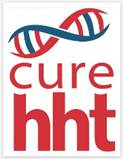Tests for Diagnosing HHT
At your first visit to the HHT Center, your doctor may not know if you have internal AVMs.
If your doctor suspects HHT, he or she will likely order noninvasive diagnostic tests such as:
- MRI
- CT scan
- Echocardiogram
These tests will tell if you have brain or lung AVMs.
Your doctor may also suggest genetic testing to find out if you have a mutation in one of the following genes:
- Endoglin (ENG)
- Activin receptor type II-like kinase 1 (ACVRL1)
- SMAD4
If you have HHT, we urge you to tell your relatives so they can decide if they want to have diagnostic tests for this disease. Your first-degree relatives (biologic parents, brothers and sisters, and children) have a 50% chance of having the disease if you have the disease, regardless of whether they are symptomatic.
We highly recommend a clinical or genetic diagnosis for all related family members. An early diagnosis, follow-up care, and long-term monitoring can help prevent the complications of HHT.



















